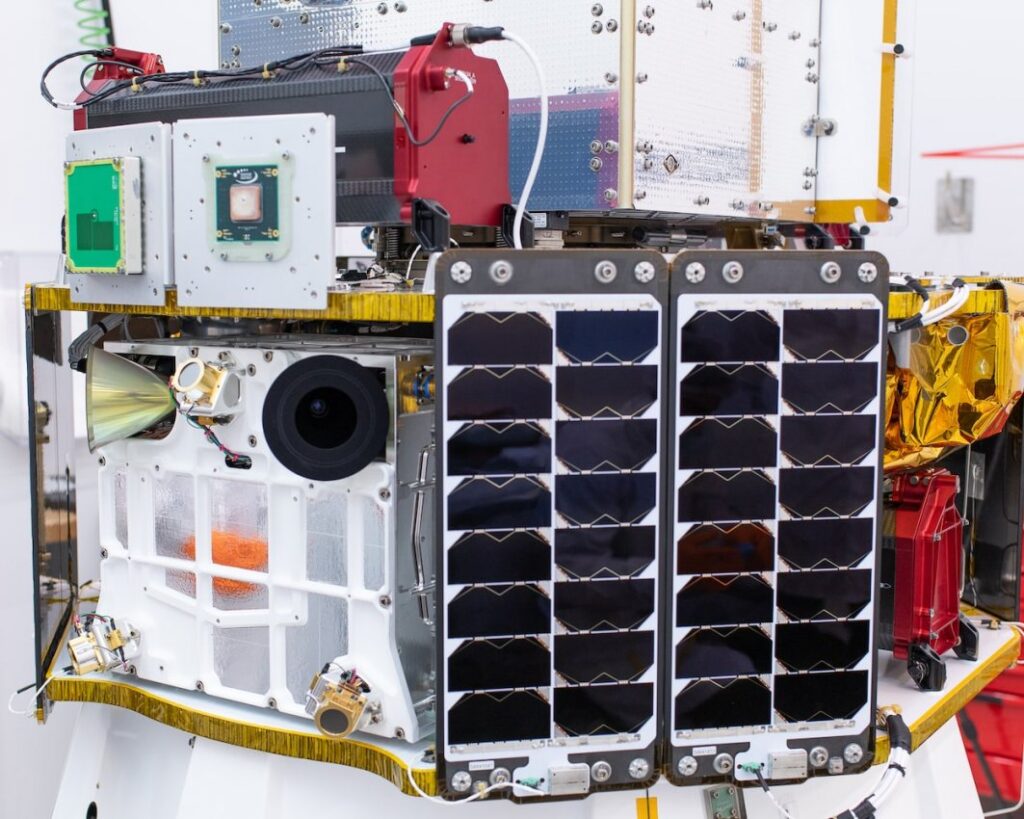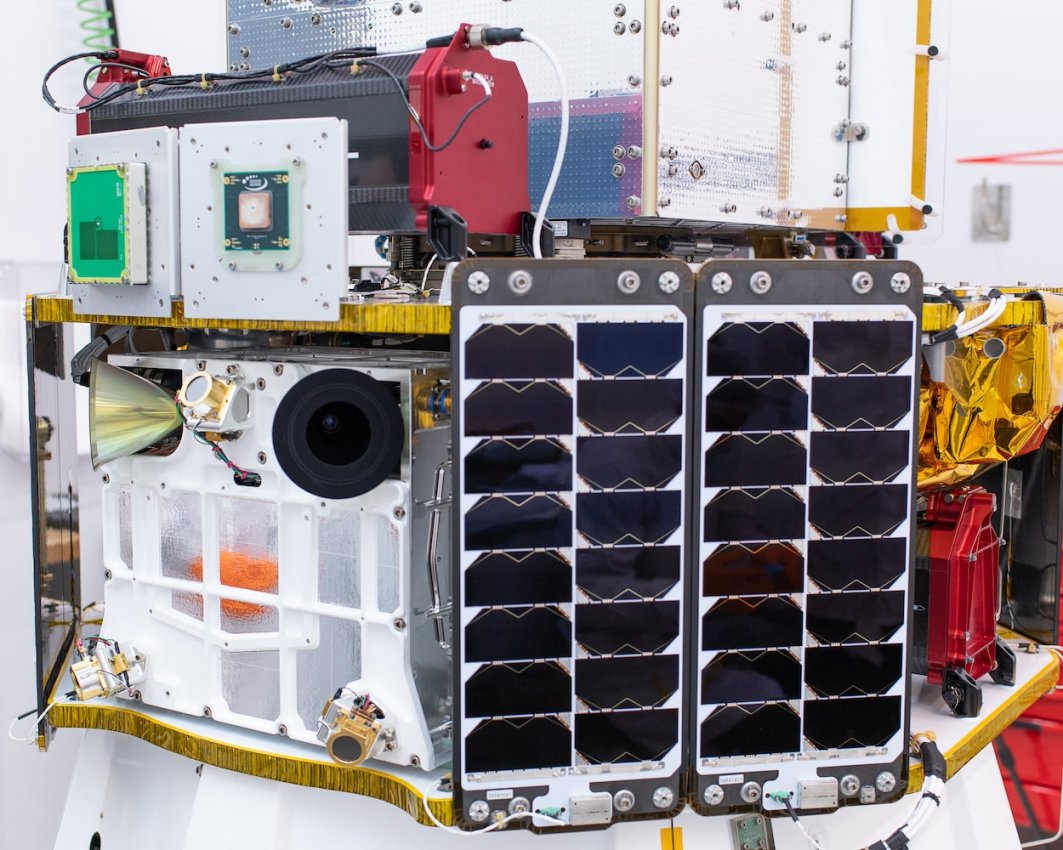
Rocket Lab’s Satellite Components Making Missions Possible
There are a lot of different parts that go into developing, creating, and launching a successful satellite. Rocket Lab is best known for its small-lift launch vehicle service, however, the company also provides additional services and features to different customers. These are high-quality-tested components that can make the satellite development and building process a lot easier and simpler.
Rocket Lab offers reliable and flight-proven satellite components to help make different missions possible. Rocket Lab does this by offering a wide variety of quality components mainly including star trackers and reaction wheels. Both have a lot of history within the company and are meant for the installation and use on many different types of satellites.
Rocket Lab is not only working on different launch vehicles and providing a launch service to space but also working with complex satellite components. This is part of the greater goal of filling some of the constantly increasing demand in the small satellite market. Thanks to a partnership and acquisition, Rocket Lab is providing more than just one helpful service to many different customers.
Satellite Components Background

Recently in 2020, leading satellite hardware manufacturer Sinclair Interplanetary became part of the Rocket Lab family. Prior to the acquisition, Sinclair was a lot smaller and had less access to necessary resources. However, after being acquired by Rocket Lab, Sinclair Interplanetary was able to tap into Rocket Lab’s resources, scale, manufacturing capability, and innovative technologies. This has allowed the two companies to combine and produce world-leading satellite technology that’s accessible to more customers. This service offers a wide variety of high-performance, affordable, and rapid-response spacecraft components designed specifically for small satellite missions.
Rocket Lab advertises this service to a wide variety of applications. They mention whether your mission is a one-off technology demonstration, an interplanetary expedition, or a constellation, their technology will help make it happen and become a reality. Additionally, these satellite components can be incorporated into the Photon spacecraft. If customers don’t want to go this route they can purchase components separately and use them in their own design. Sinclair Interplanetary along with Rocket Lab has designed and built flight hardware for hundreds of different missions with a 20-year track record. Each mission has helped them improve their technology along with constant tests and provide a better service to different customers.
Satellite Components
Star Tracker – The first component that Rocket Lab offers is the star tracker. Specifically, Rocket Lab builds and sells high-performance star trackers and baffles for small spacecraft. The body of the star tracker is made from aluminum. The star tracker attaches to the host spacecraft with a three-point mount system. Currently, there are over 90-star trackers in orbit right now. These are helping power and maneuver a large list of different small satellites and technology. They are meant to survive the harsh conditions of space. The star trackers are meant to operate at -40 to plus 50 degrees Celsius and can survive at -40 to plus 95 degrees Celsius. Three first-generation units were launched in November 2013. Three years later 40 second-generation units were launched in June 2016. Looking at baffle options there is no baffle, short baffle, and large baffle. Each has a list of different characteristics and differences in price. Some of the main differences include dimensions, mass, field of view, and more. The no baffle option is the cheapest at $120,000 each, then there is the short baffle at $140,000 each, and finally the large baffle also at $140,000. These are the specific options that customers can purchase and install on different small satellites.
Reaction Wheel – The next satellite component that Rocket Lab offers are different types of reaction wheels. A reaction wheel is a type of flywheel primarily used in spacecraft for three-axis altitude control. This technology is very common on different spacecraft such as the James Webb Space Telescope to orient and slightly move the spacecraft without using any thrust. Rocket Lab offers high-reliability, vacuum-lubricated reaction wheels designed for picosatellites, nanosatellites, and microsats. All Sinclair Interplanetary by Rocket Lab reaction wheels incorporates a built-in digital processor. They can be commanded over a serial bus to produce the desired speed, momentum, or torque. In addition, they also report digital telemetry concerning speed, temperature, voltage, current, and other health parameters. Rocket Lab has 6 different options for reaction wheels. Each is a different size and provides more or less power and control of the designated satellite or spacecraft. Altogether there are more than 240 reaction wheels in orbit performing well.
The first option is the largest at 1 Nms. The Nm stands for Newton meter and refers to the torque produced by the reaction wheel. This reaction wheel is suitable for 100kg Earth observation missions. Currently, there are only 52 units on-orbit on 13 spacecraft, with the first launch in June 2016. The next option is a 400 or 200 mNms variant. This wheel is optimized for torque and for radiation hardness. It was mainly designed for high-agility remote sensing or science microsatellites. Next is the 60 mNms reaction wheel. This wheel packs high-torque motor phase current control electronics into a small package. There are 52 units on-orbit on 16 spacecraft, with the first launch in June 2014. The sizes keep going down including a 30 mNms option. This variant was first launched in 2008 and there are over 50 in orbit right now. Finally, there is a 10 and 3 mNms reaction wheel variant for very small satellites. Rocket Lab mentions that this wheel is so tiny that 3 wheels can be carried in a 1U Cubesat. A 4-wheel pyramid configuration is also possible. These range in price from around $80,000 for the largest reaction wheel and around $15,000 for the smallest.
Impact On Space Industry

This service being provided by Rocket Lab plays a very important role in different aspects of the space industry and specifically the small satellite market. Currently, many satellite companies work and develop a small satellite and then contact companies such as Rocket Lab to launch them. Rocket Lab has been hard at work on different launch vehicles for this exact purpose but is expanding out its capabilities and opportunities as well. Rocket Lab is working to not only launch satellites but provide complex and necessary components as well. This will likely have a very positive impact on the general space industry and small satellite market. With companies able to purchase necessary technology along with a ride to space, it simplifies the process a lot. This ends up saving a lot of time and encouraging the launch and development of more satellites. With Rocket Lab acquiring Sinclair Interplanetary, they now have a long history of successful use of different components such as star trackers and reaction wheels. Both are extremely complex and necessary for many different missions. Opportunities like this will likely expand our access to space and increase the number of launches over time.
Conclusion
A lot of time and effort is needed prior to a small satellite orbiting the Earth. Most of this time goes into the development, manufacturing, and launching process. Rocket Lab has been working on small-lift launch vehicles primarily with the goal of providing a very affordable launch service. With the acquisition of Sinclair Interplanetary, they are now also offering high-quality satellite components such as star trackers and reaction wheels. This service helps speed up and simplify the process. We will have to wait and see how popular this service becomes and if it ends up developing into something bigger in the future.
